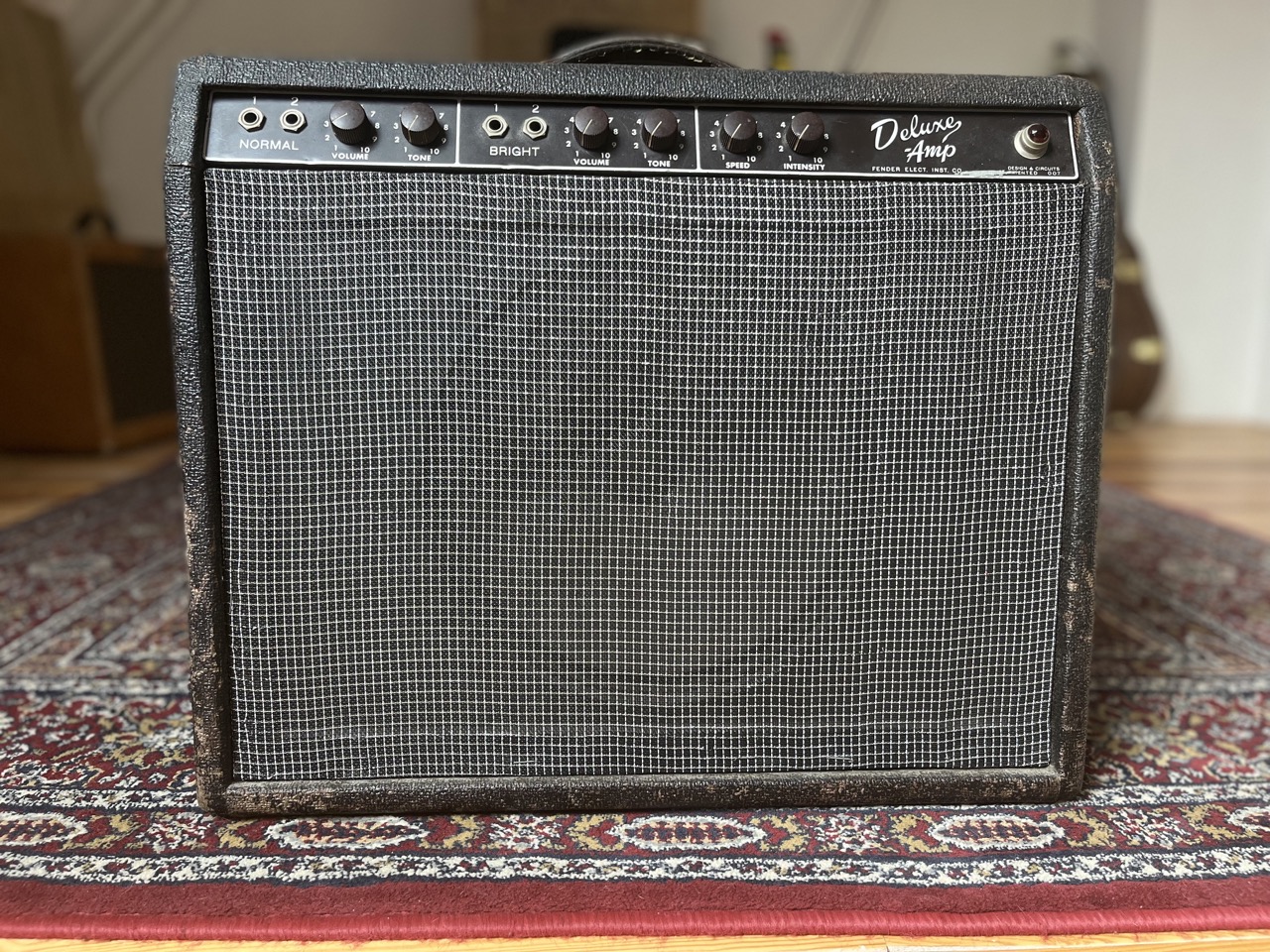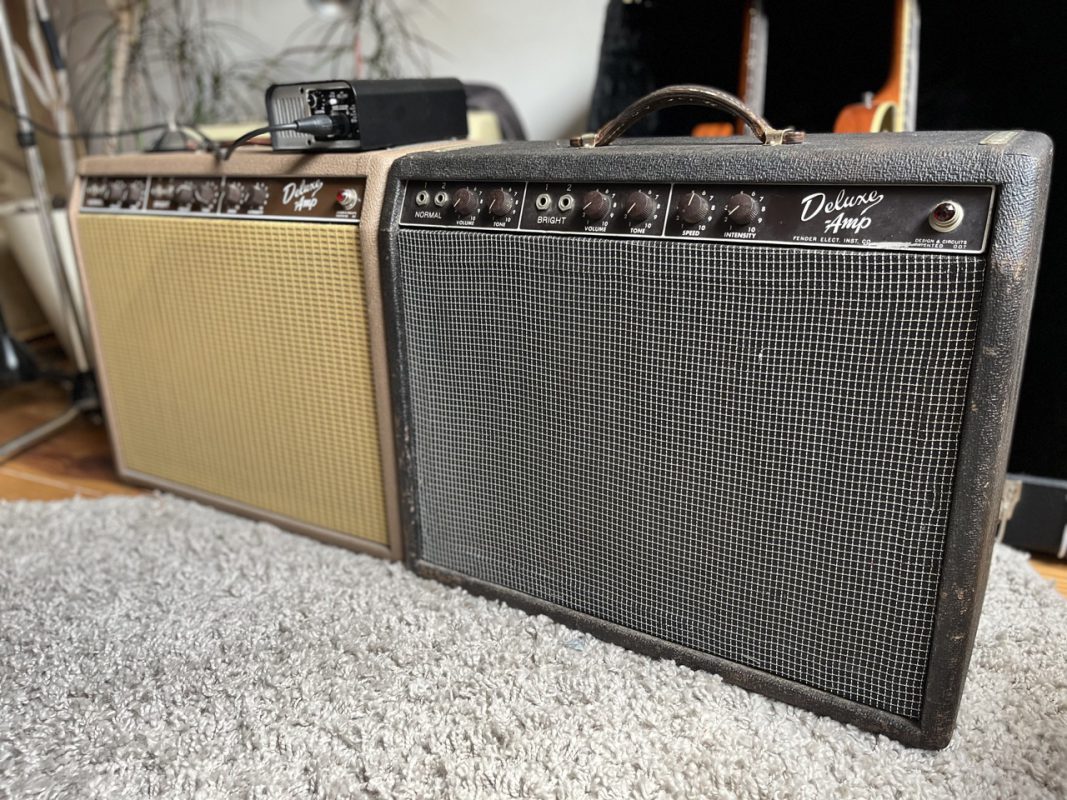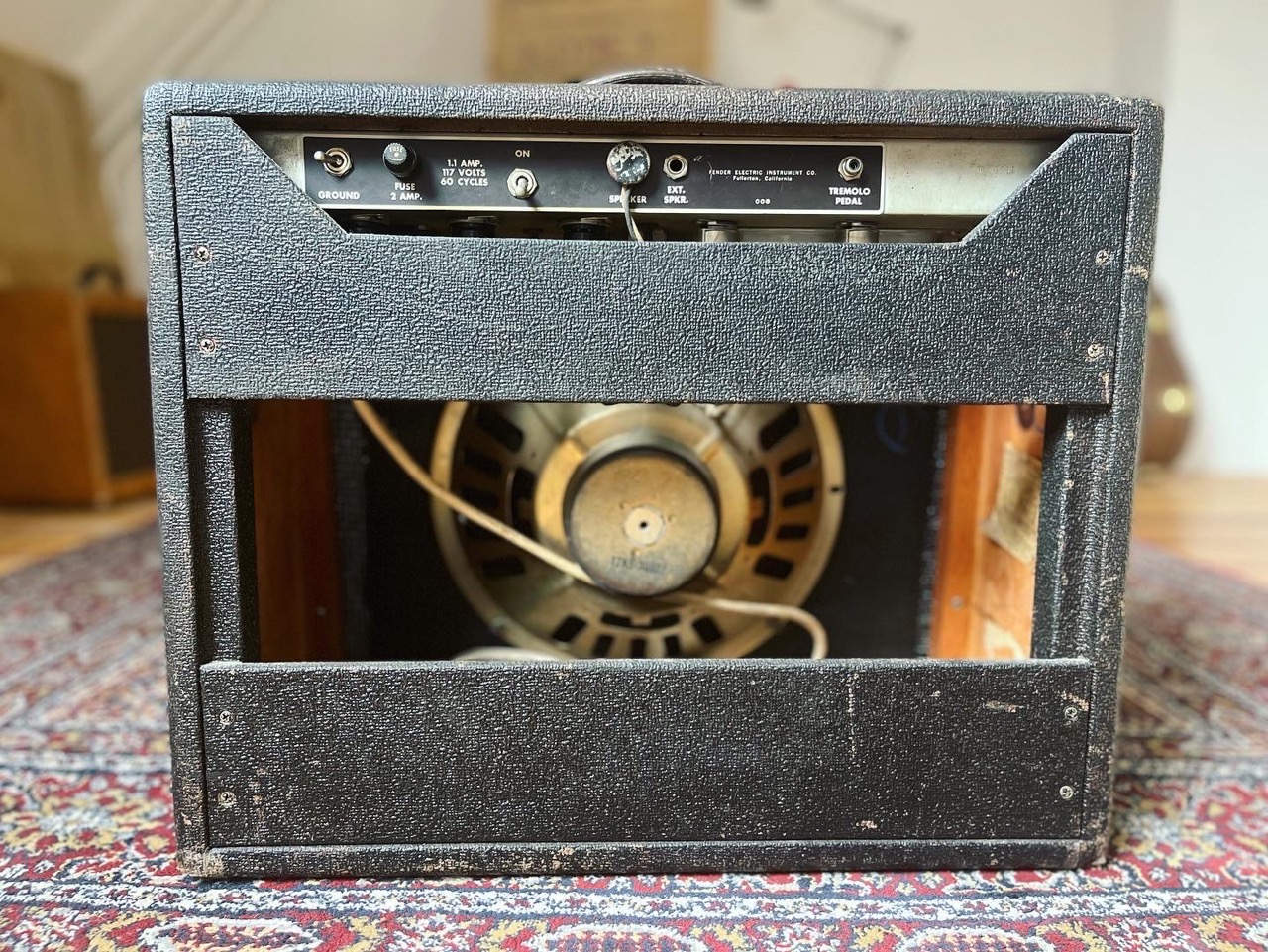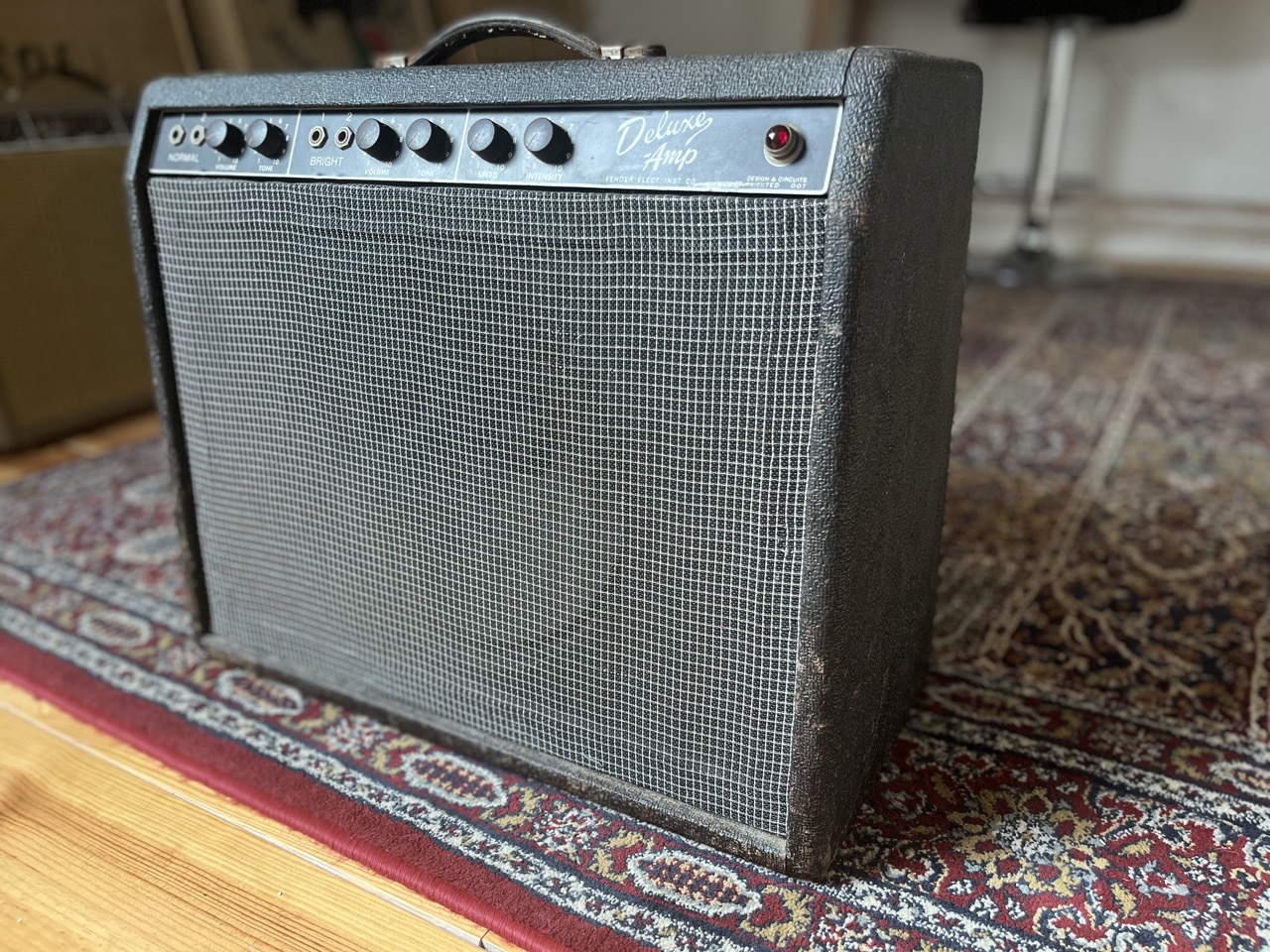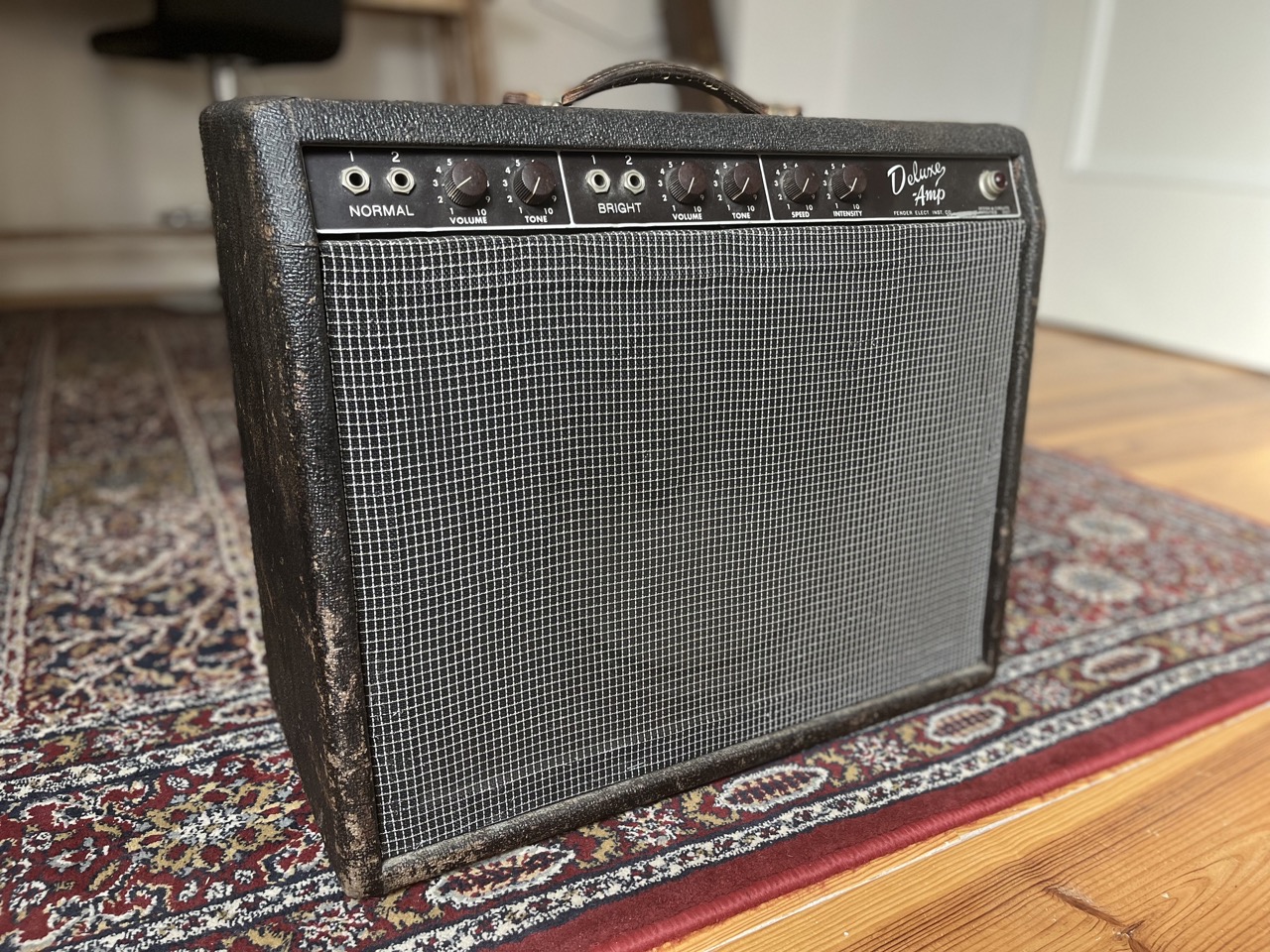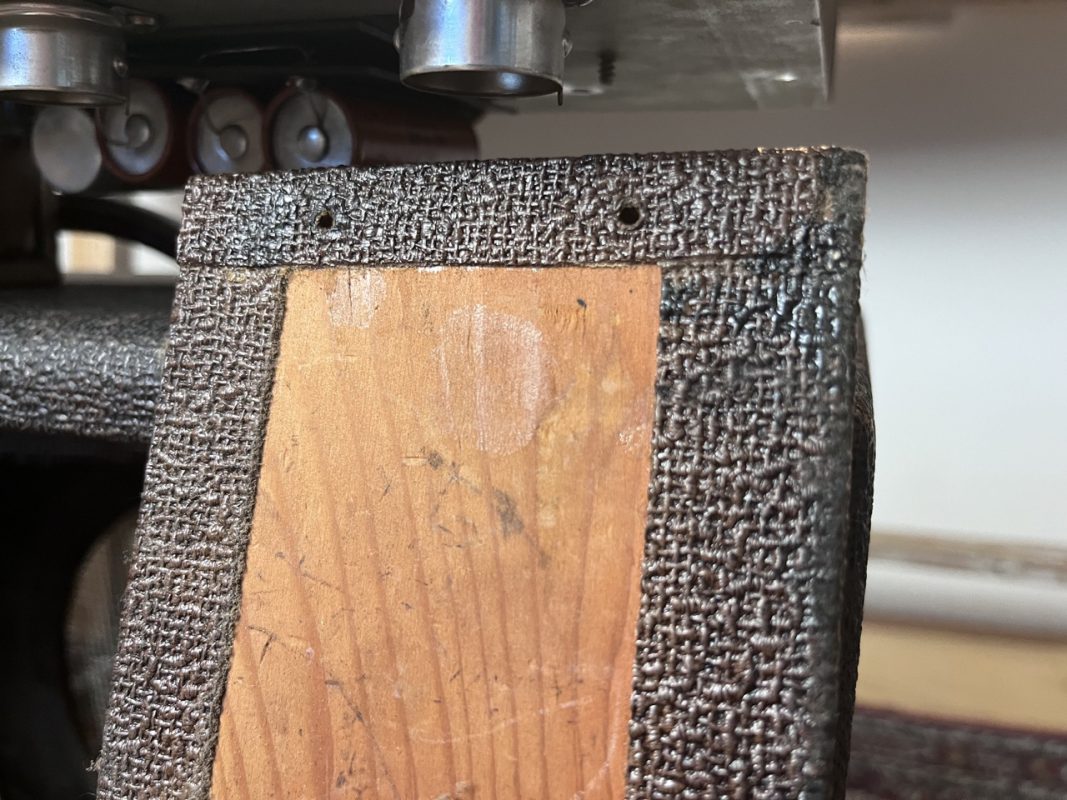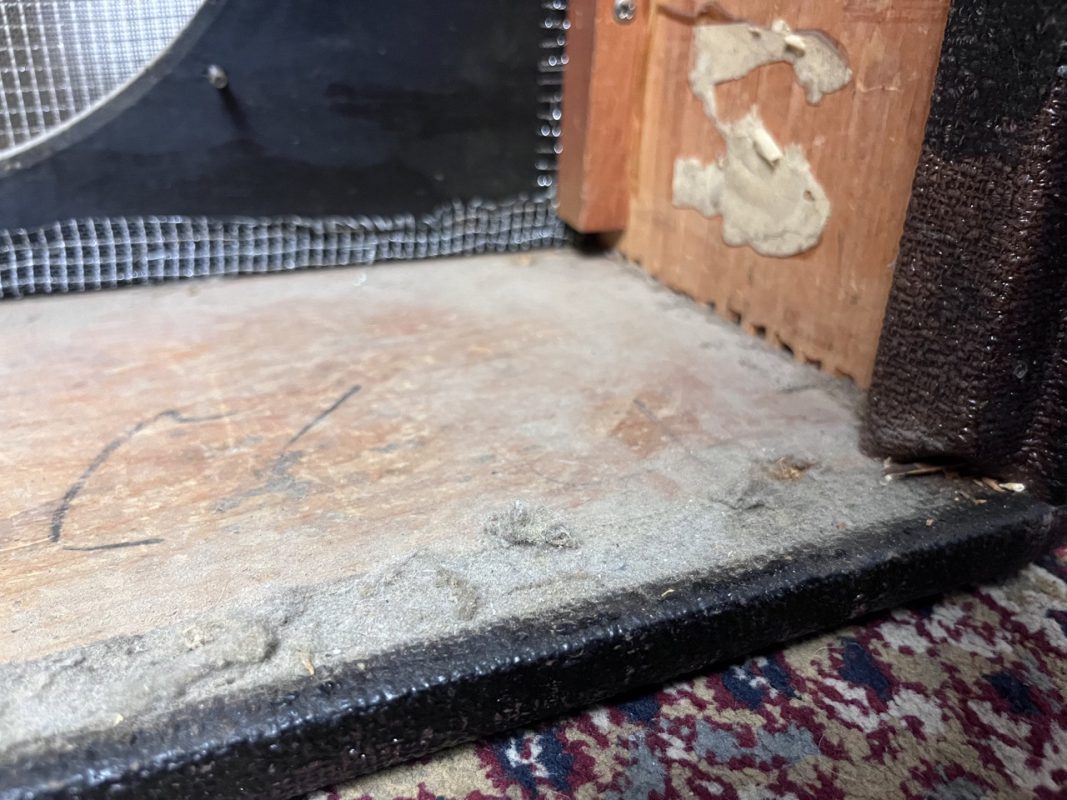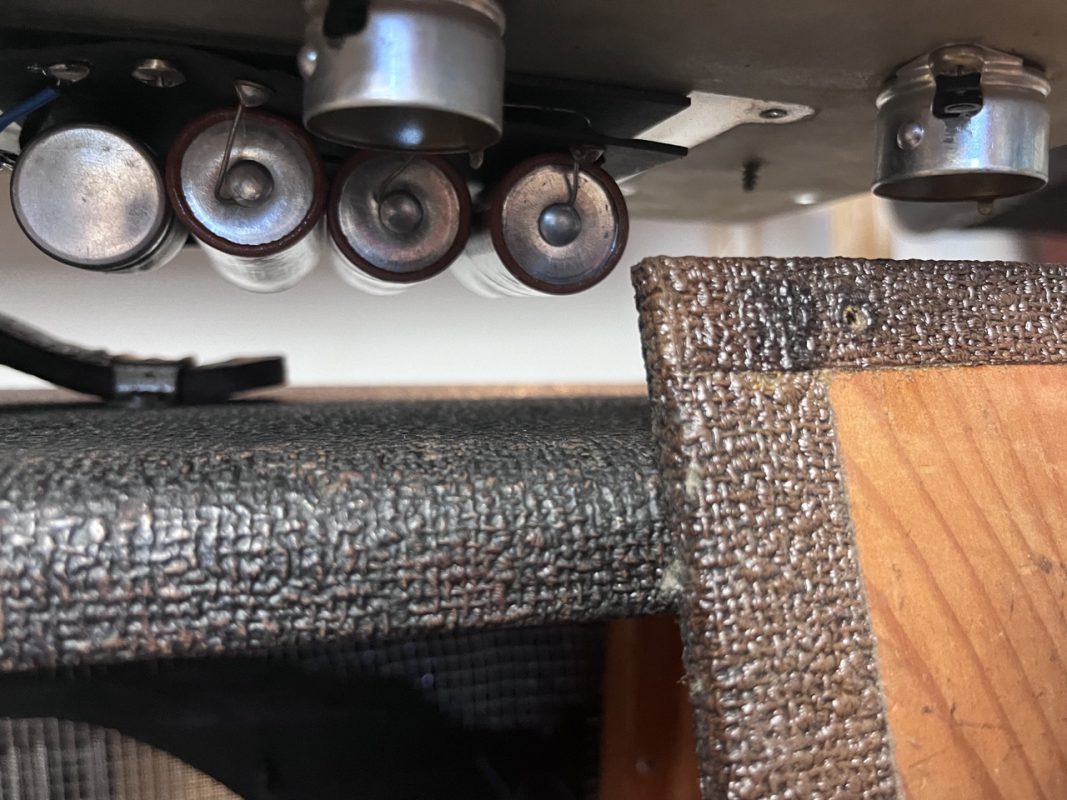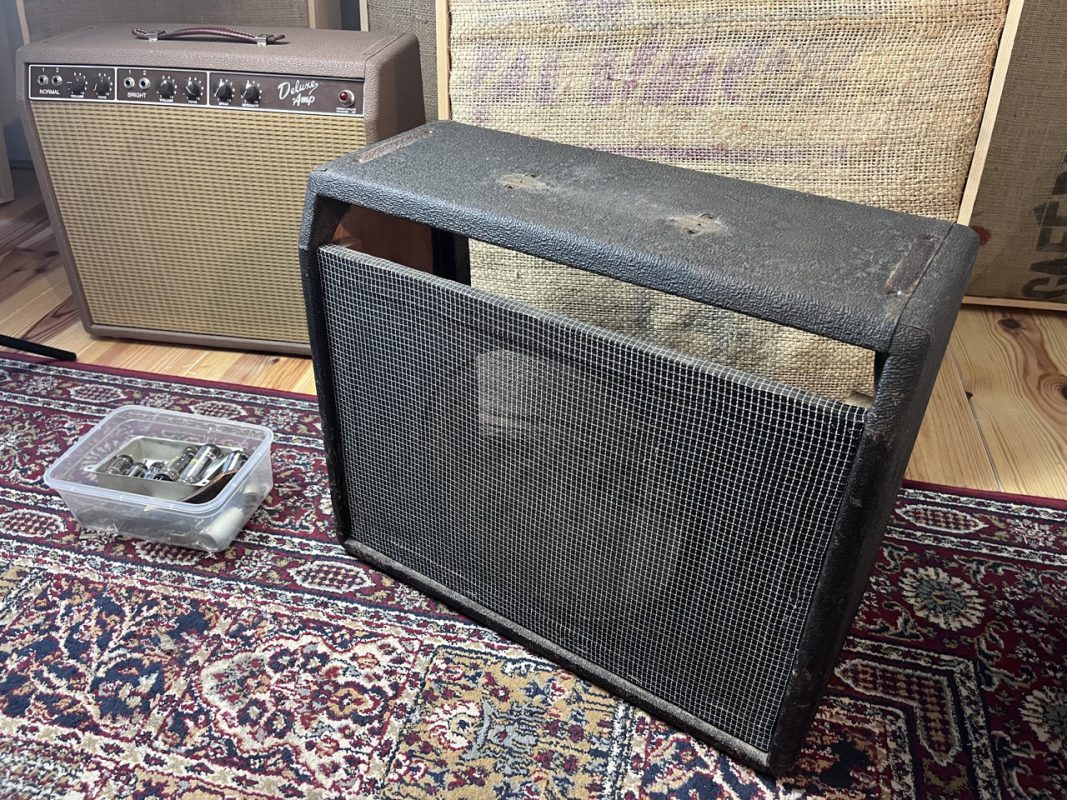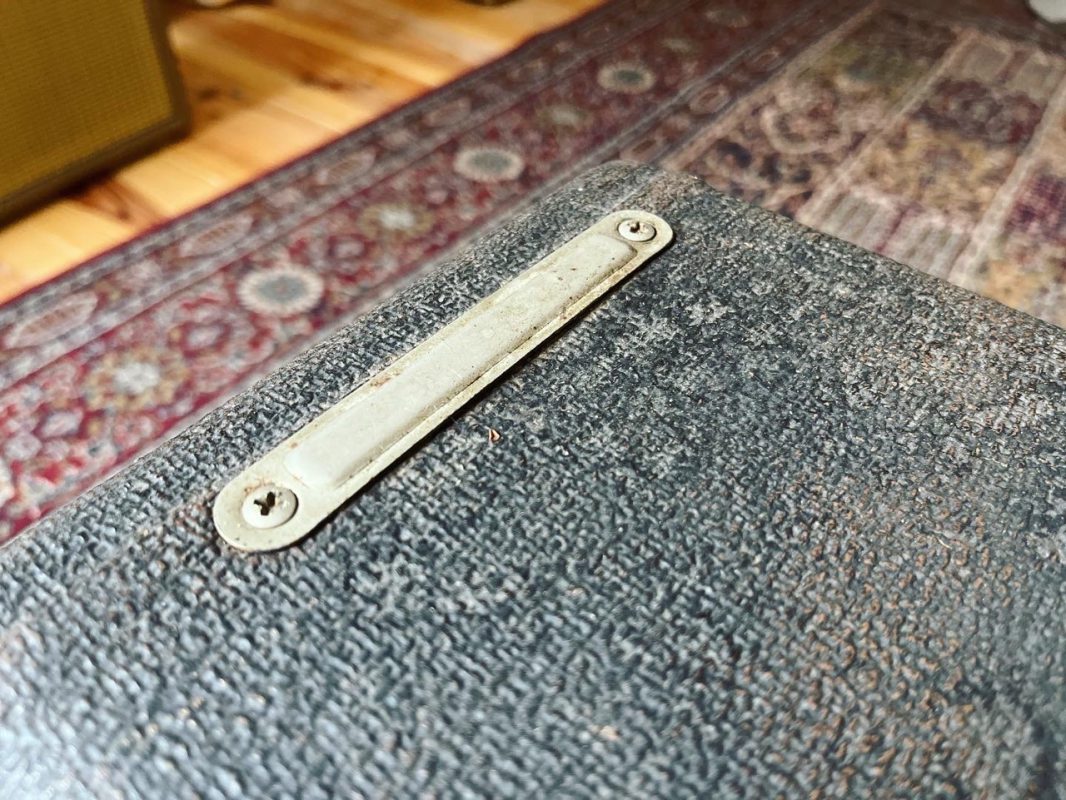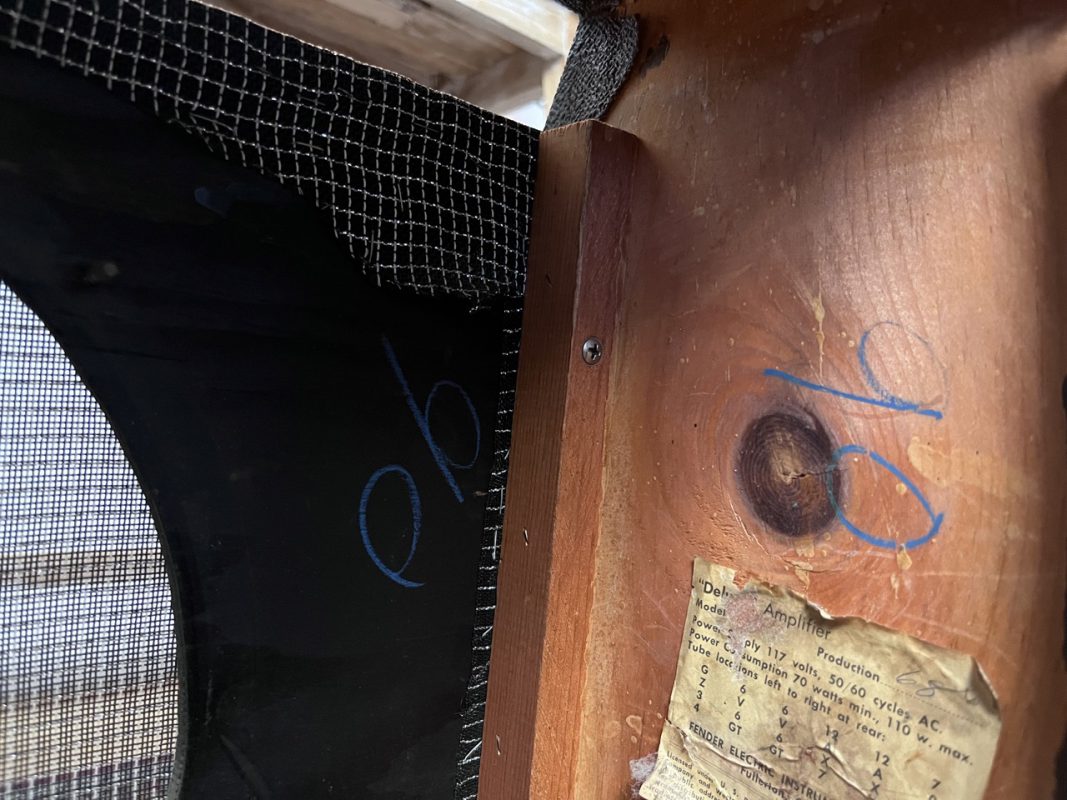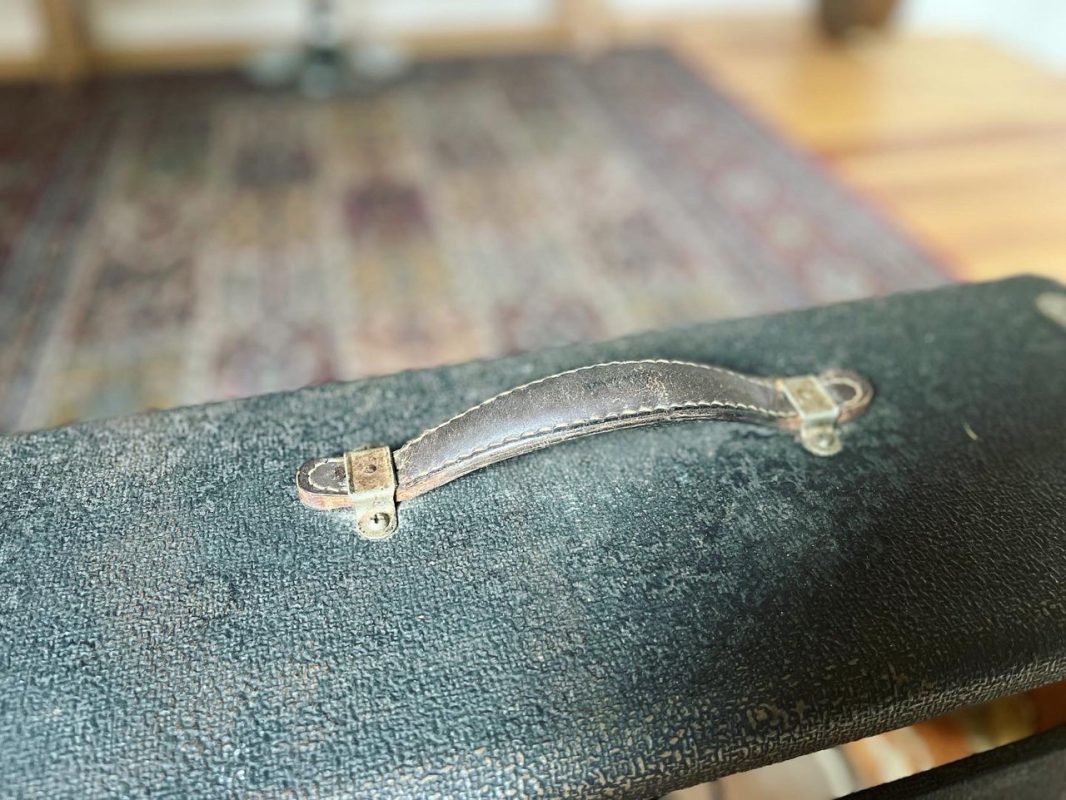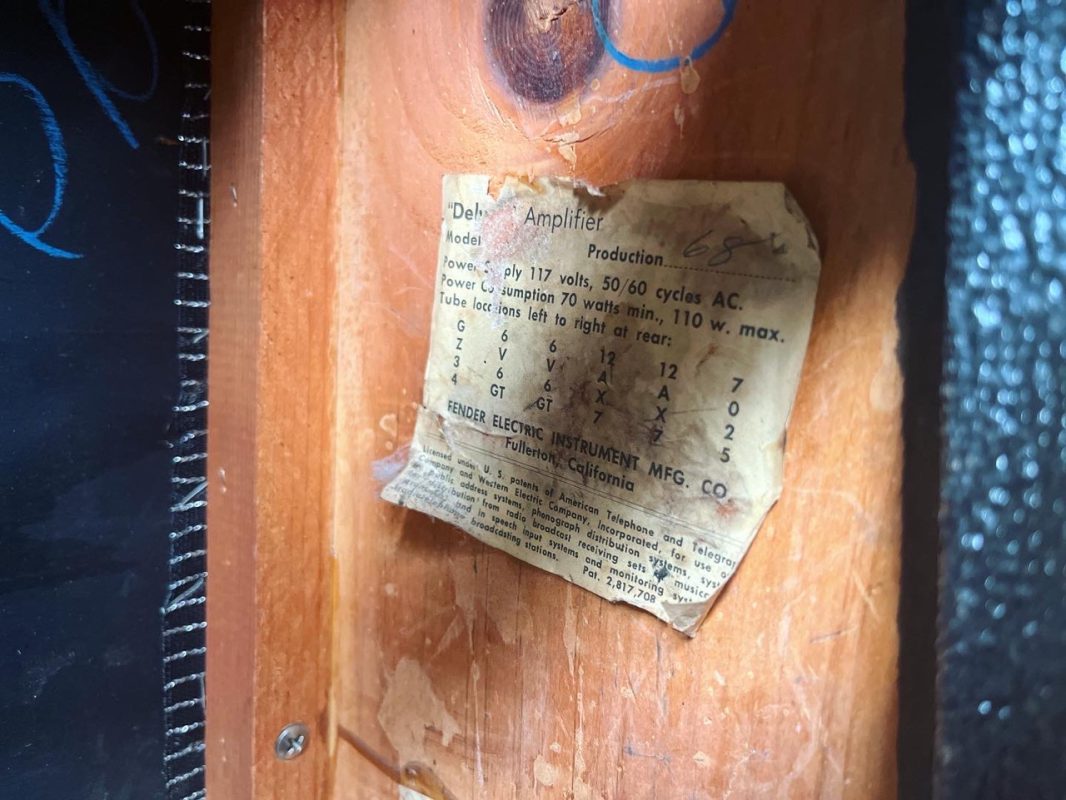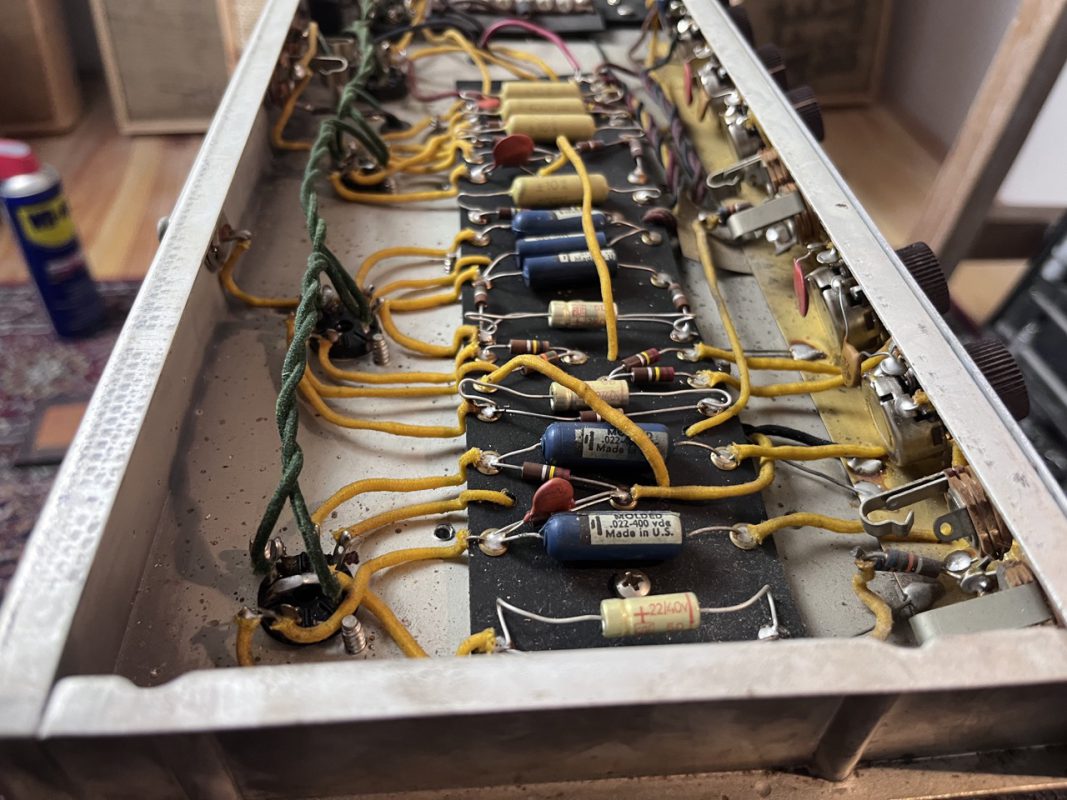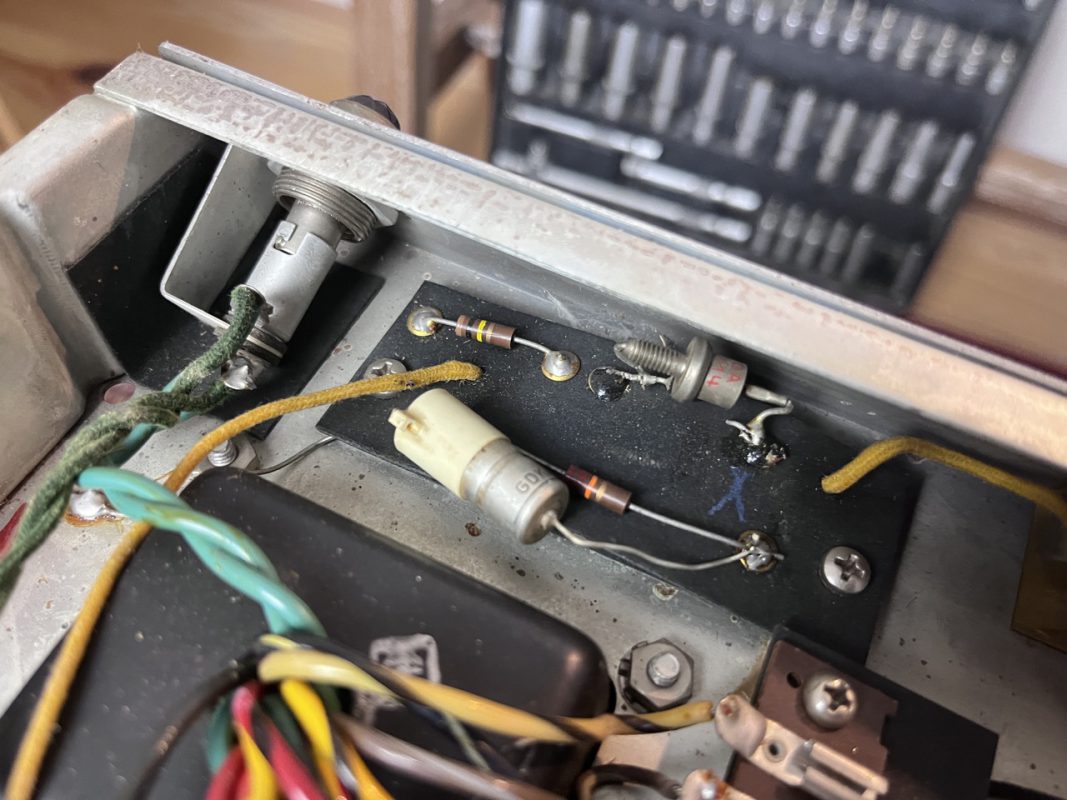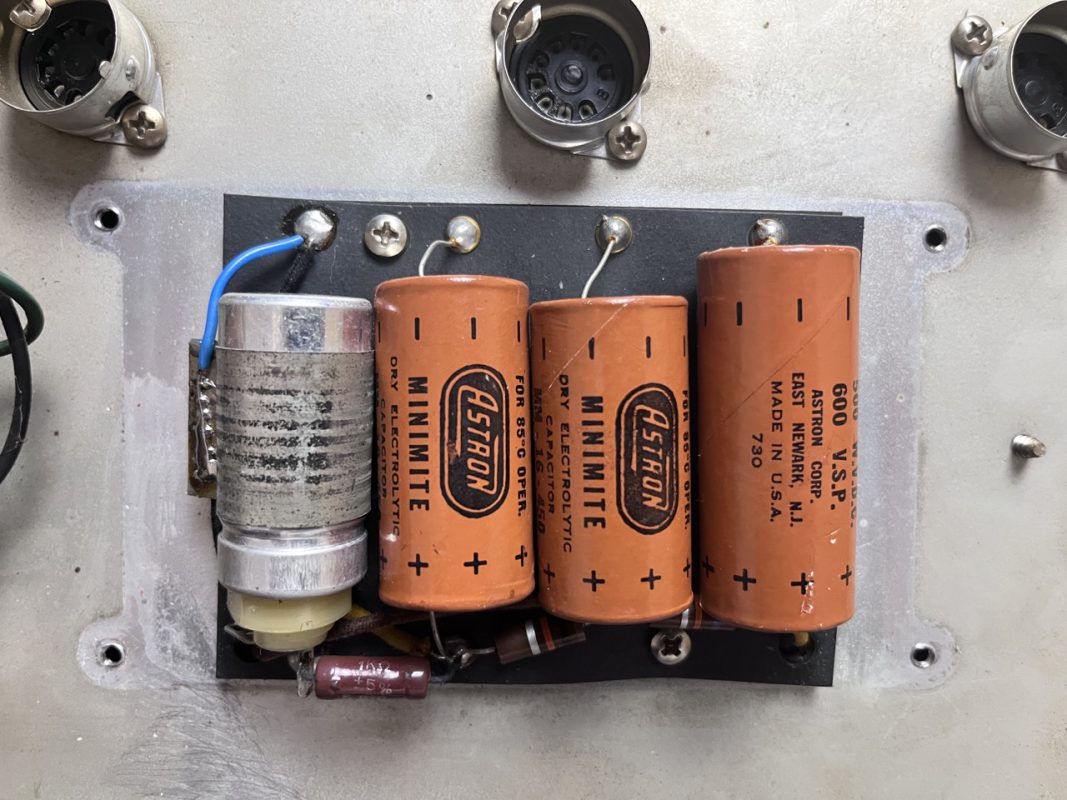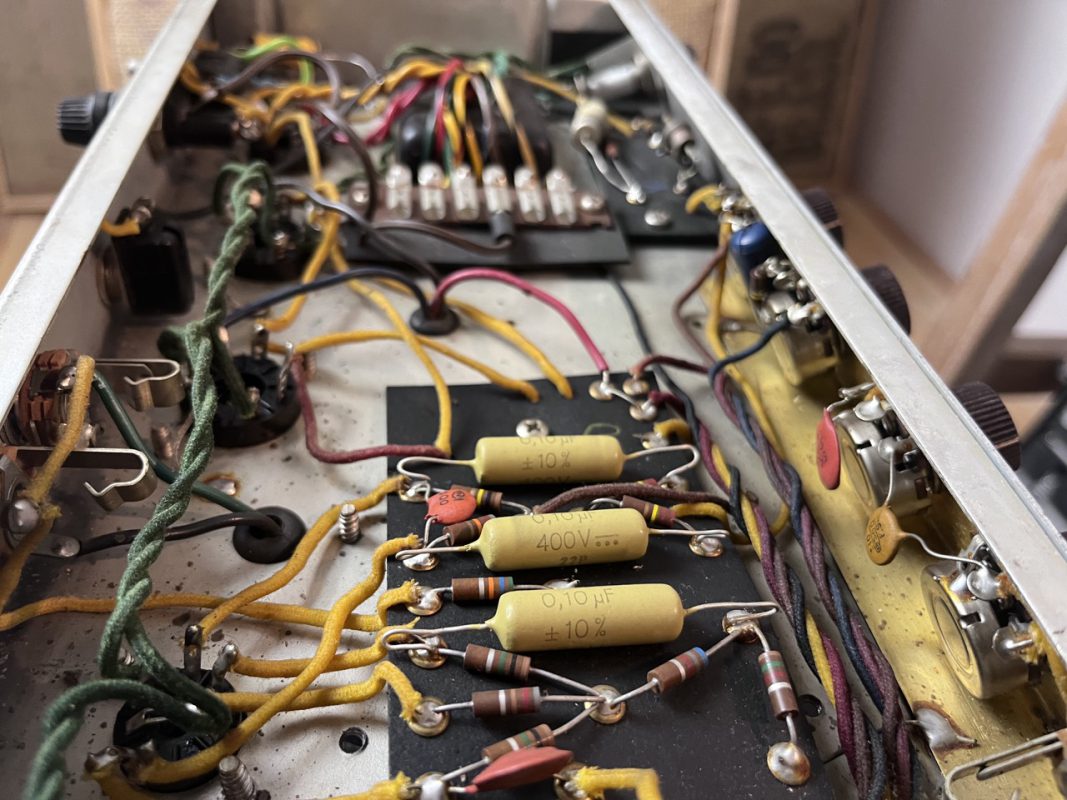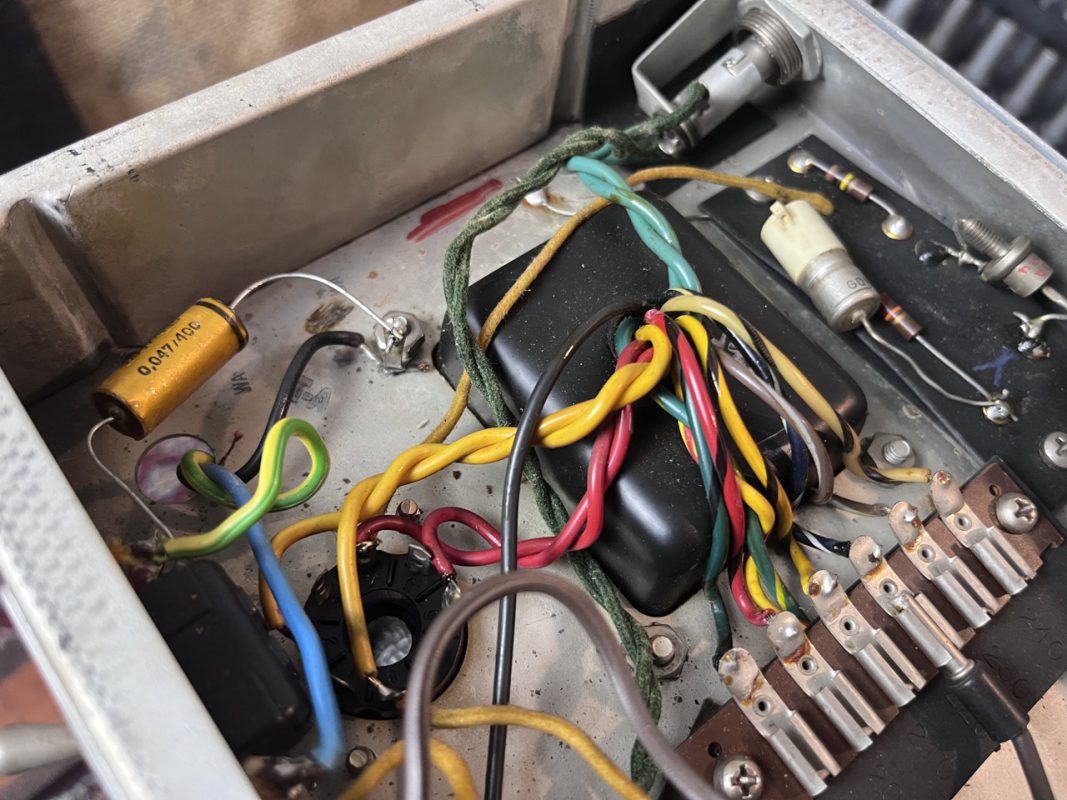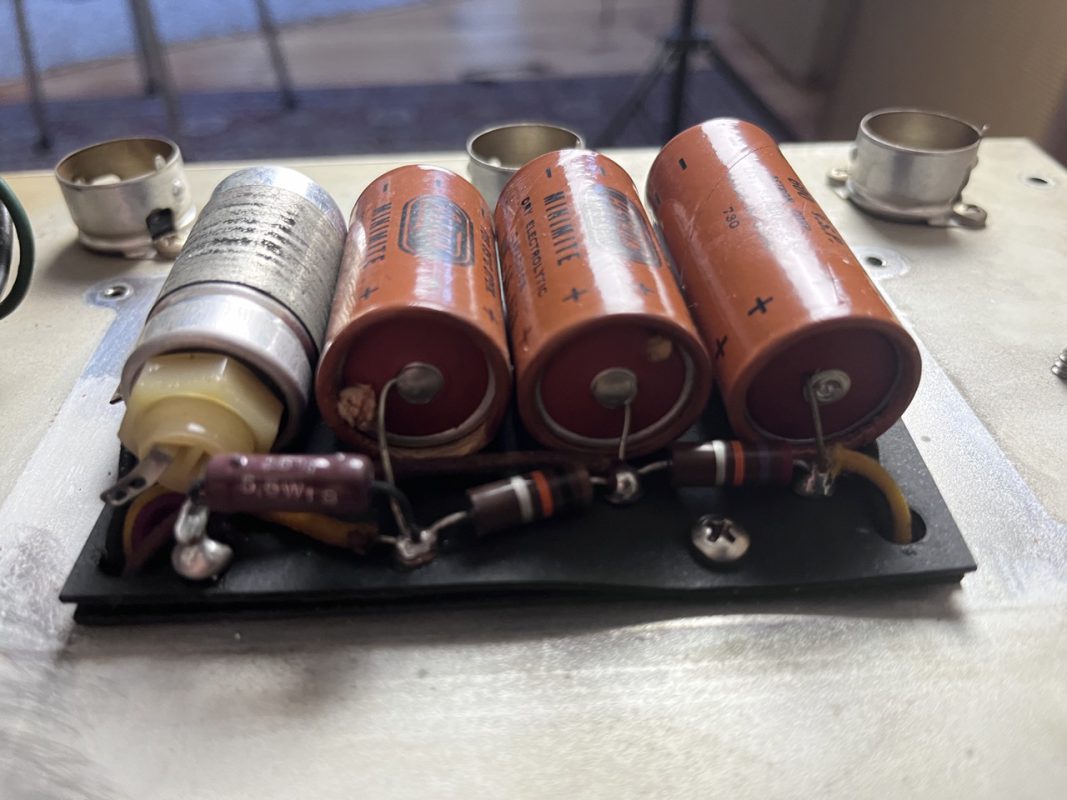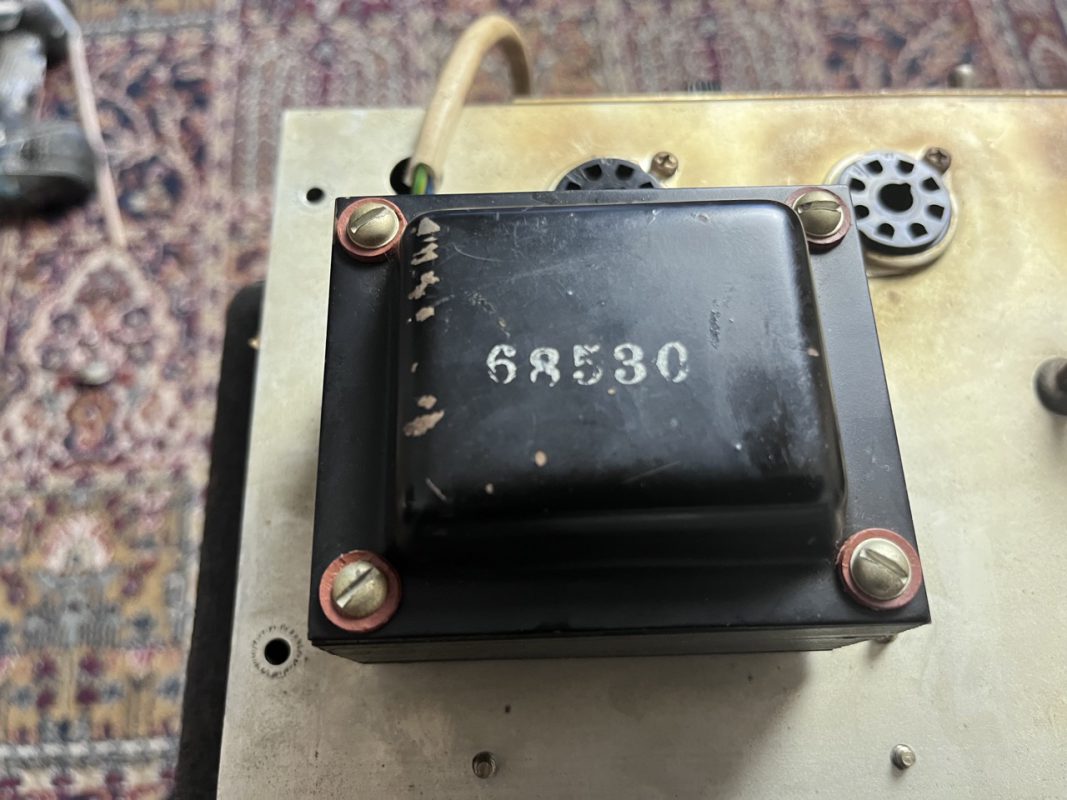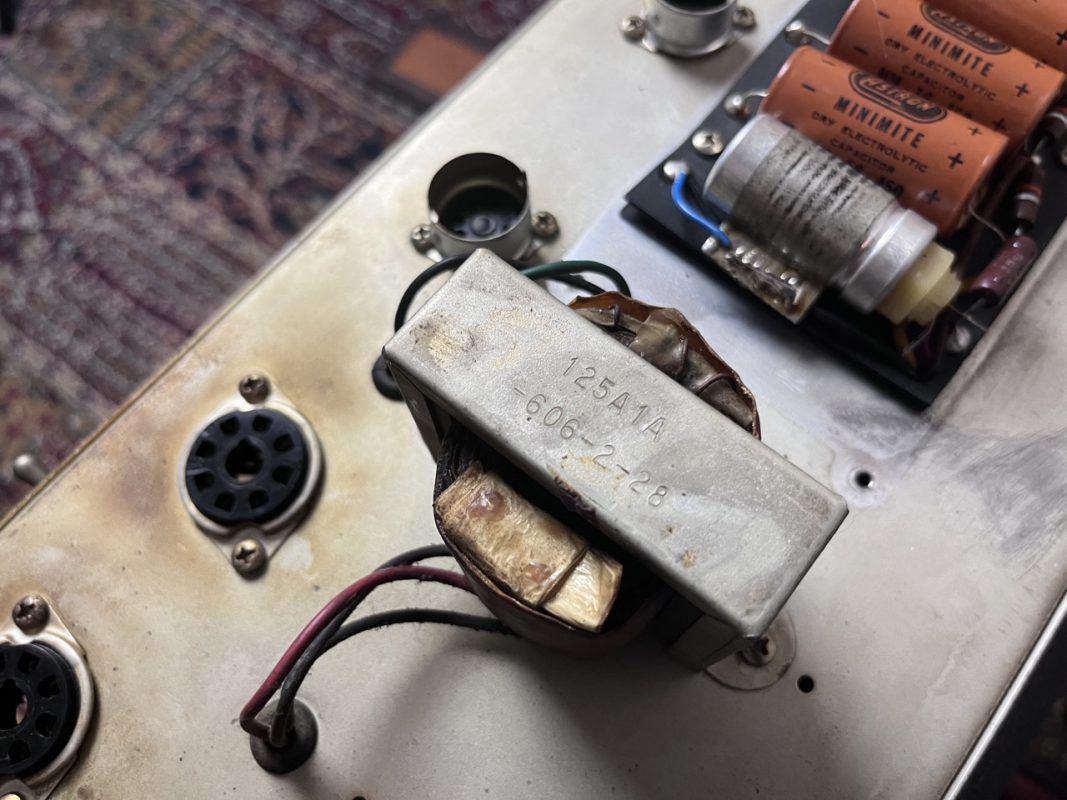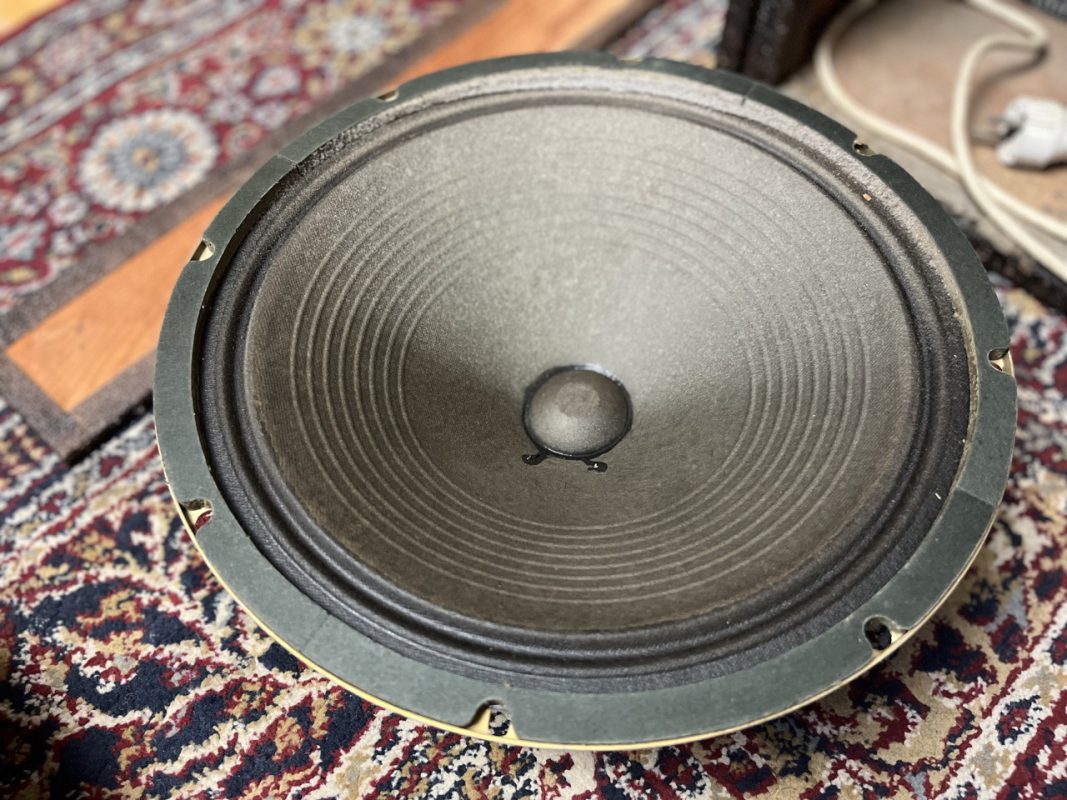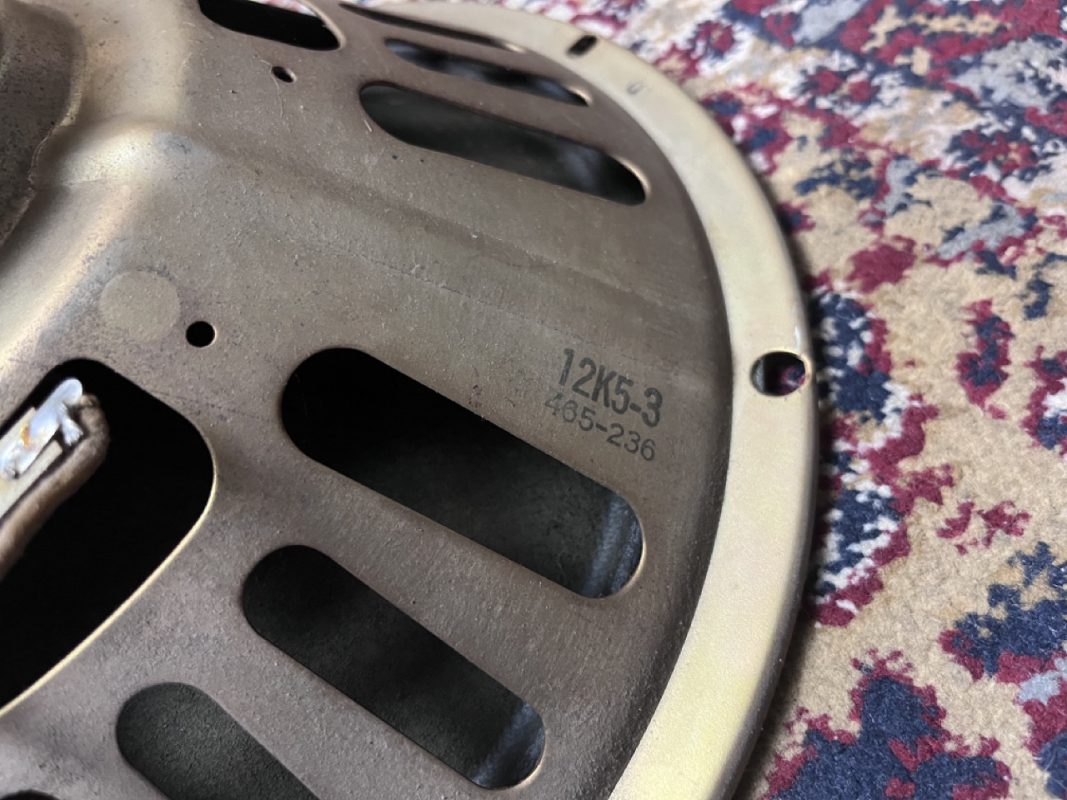1963 Fender Brownface Deluxe Restoration
A multi-part blog about the restoration of a Fender Deluxe from the Brownface era
What Happened To This Thing?
It’s still great though! So, lately I came to my senses and started to GET RID of some of my amps. And I started with BUYING this one…
But hey, this time it’s different I’m telling you. Nope.
So, this is a painted over 63′ Deluxe amp. Yes, this thing is supposed to look brown, with a wheat beige grillcloth.
Super Promising Story
The story of this amp is that is has been bought by the previous owner in the early 70s, and this ‘optical blackfacing’ was already done. Now, as sorry as painting amps is, this black paint has also protected the brown tolex from road-wear and tear. At the moment of writing this, the amp fires up but is in need of serious care.
The electronics’ history is unknown, but it’s been put away fully functional and has been dormant for 10+ years now. This is all promising information and with a bit of time, resources and care I think we can bring this amp back to it’s former glory, both technically and optically!
So, in this blog-post I’ll update as this amp undergoes a restoration.
Please Enjoy!
The Cabinet
In the top left, a home-brew replica of this amp. That’s how it’s supposed to look, but I kind of dig this weird look the amp has too.
Cabinet Plan
Here below on the back-panels there’s hardly any black paint. This is where I’ll do the first testing. I got these great tips from people who had to do similar work: cleaning of blonde paint on blackface amps etc. Where I was thinking thinner and spirits, they suggested actually machine polishing through the black to get to the brown without damage. Very clever and conservative. We’ll see how that turns out when we get to it!
We’re going to move on to the chassis, where we’ll investigate what parts we need if we need to replace things. We will, I can tell you already.. But when the parts are ordered and on their way, we can start our work on the disassembled cabinet. We’re also going to have to carefully remove the stapled non original grill-cloth. And by the way, the hardware on this thing has amazing patina! We’ll leave all of that alone!
The Chassis
It’s not unmolested, but it’s pretty clean! As you’ll see here below, what I’ve found so far is:
– Replaced electrolytics, which is good, but these date to far back to be 100% reliable.
– Replaced audio-caps in the latter end of the circuit and phase-inverter. That’s weird and sorry for those blue molded ones, but acceptable as these are vintage mustard caps, and the values are correct.
– Replaced diode, with the original (?) dioded clipped and left in place. Not so elegant, we’ll correct that with a new diode.
– Death cap circuitry in place still, but replaced cap while the 3 prong came in? As you see, the HOT of the power goes to the chassis and switches with the ground switch. This is of course not safe and in need of a 21st century system. The hot will go to one end fuse which goes to the PT. The cold to the power switch, and the ground, ladies and gentlemen…the ground goes to ground, to the chassis.
– On the tube side of things we’ve got 3 astrons left which at this point in time can’t be trusted anymore. They show physical leakage on 2 of them, the 8uF looks fairly clean. But these are 60 years old now. One 16uF seems replaced by something very weird, but probably functional, but very weird industrial type of capacitor.
Proper recap including the voltage dropping resistors and store everything in a box, is what the plan is.
Treasures
The power transformer is a little bit mysterious. It’s not a schumacher like it should be in these. The stamp looks like something from the TRIAD era, which dates to tweed era amps. However, there’s an internal voltage switch system inside the amp that looks fairly original or at least very old. Could it be that this is some kind of ‘export’ model transformer that had multitap, or is it a replacement for broken transformer? I’m puzzled, as it seems at home in the chassis.
Speaker is the original Oxford, code 456-236. Week 36 of 1962. It’s in such a good shape, but it’s very old, and possible dry. I’m considering keeping it aside and come the time that the amp goes live, run a Blue Alnico or something.
Output transformer has the code: 606-2-28. Week 28 of 1962. This is getting more interesting as we go.
On Youtube
Here’s a video where we go through this process in more detail.
UP NEXT - The Electronics
In the next part of this series, we’ll start working on the electronics. That should be exciting giving what we have seen up until now.
TO PART 2 –>
